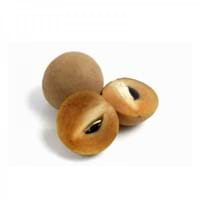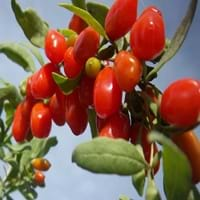Health Benefits
Anti-inflammatory properties, Arthritis treatment, Regulates Blood Sugar, Unknown
Anti-oxidant properties, Eye care, Helps in cartilage regeneration, Regulates Blood Sugar, Treatment of osteoarthritis
General Benefits
Boosts immune system, Controls blood sugar levels, Digestive aid
Boosts immune system, Digestive aid
Skin Benefits
Nourishes skin, Protects skin from oxidative stress
Anti-aging benefits, Reduces wrinkles, Treatment of skin diseases
Hair Benefits
Prevents hair loss, Promotes longer and healthier hair, Regulates hair growth
Protects hair, Regulates hair growth
Allergy Symptoms
Asthma, Red rash, Swelling of mouth, tongue or lips
Anaphylaxis, Itching, Sneezing, Wheezing
Side Effects
Diarrhoea, Vomiting
May interact with some drugs
Best Time to Eat
As a snack in the late afternoon
Any time except an hour after meal, Don't consume at night and before bed
Vitamin B5 (Pantothenic Acid)
Vitamin C (Ascorbic Acid)
Vitamin E (Tocopherole)
Not Available
Vitamin K (Phyllochinone)
Not Available
Lutein+Zeaxanthin
Not Available
Phytosterol
Not Available
Calories in Fresh Fruit with Peel
Calories in Fresh Fruit without Peel
Not Available
Not Available
Calories in Canned Form
Not Available
Calories in Juice
Not Available
Calories in Jam
Not Available
Calories in Pie
Not Available
Varieties
Bush Table Queen, Heirloom Table Queen, Festival Hybrid, Early Acorn Hybrid, Table Ace, Ebony and Cream of the Crop
No Types
Seedless Variety
Not Available
No
Color
Dark green, Green-yellow, Orange green
Scarlet red
Inside Color
Not Available
Orange
Taste
Sweetish
Slightly bitter, Tart
Origin
Central America, North America, Unknown
Unknown
Soil Type
Well-drained
Well-drained
Climatic Conditions
Cold, Sunny
Cold, Hot
Facts about
- It was named as Acorn Squash for its resemblance to a large ribbed acorn.
- It is said that squash was being grown in Mexico as long as 10,000 years ago.
- It was the first food cultivated by native American Indians.
- Study says a man named Li Qing Yuen used to eat goji berries daily and lived for 252 years.
- They are also known as wolfberries in India & China.
- This fruit is used for spiritual purposes at many places.
Spirits
Not Available
Yes
Cocktails
Not Available
Yes
Other Countries
Egypt, India, Iran, Italy, Mexico, Russia, Turkey, Ukraine, United States of America
Canada, France, India, United States of America
Top Importer
UAE
United States of America
Botanical Name
Cucurbita Pepo
Lycium barbarum
Synonym
Winter Squash
Wolfberry
Subkingdom
Tracheobionta
Tracheobionta
Division
Magnoliophyta
Unknown
Class
Magnoliopsida
Unknown
Subclass
Dillenhidae
Asteridae
Order
Cucurbitales
Solanales
Family
Cucurbitaceae
Solanaceae
Generic Group
Not Available
Not Available
Difference Between Sapota and Gojiberry
We might think that Sapota and Gojiberry are similar with respect to nutritional value and health benefits. But the nutrient content of both fruits is different. Sapota and Gojiberry Facts such as their taste, shape, color, and size are also distinct. The difference between Sapota and Gojiberry is explained here.
The amount of calories in 100 gm of fresh Sapota and Gojiberry with peel is 40.00 kcal and 32.00 kcal and the amount of calories without peel is Not Available and Not Available respectively. Thus, Sapota and Gojiberry belong to Low Calorie Fruits and Low Calorie Fruits category.These fruits might or might not differ with respect to their scientific classification. The order of Sapota and Gojiberry is Cucurbitales and Solanales respectively. Sapota belongs to Cucurbitaceae family and Gojiberry belongs to Solanaceae family. Sapota belongs to Cucurbita genus of Pepo species and Gojiberry belongs to Lycium genus of L. barbarum species. Beings plants, both fruits belong to Plantae Kingdom.









